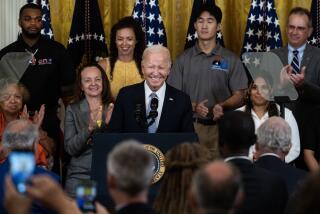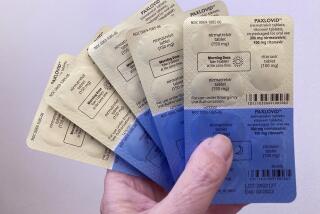An insider’s view of generic-drug pricing
Bob Toomajian worked for 16 years as Kaiser Permanente’s drug purchasing manager for Southern California, giving him an insider’s knowledge of how medications are priced before reaching consumers.
When it comes to patented name-brand drugs, he told me, pharmaceutical companies try to get away with the highest prices possible. On the other hand, they’re typically recovering millions of dollars in research and development costs, so those sky-high prices are perhaps understandable.
It’s a different story for generic drugs, Toomajian said. In that case, the manufacturer isn’t saddled with R&D; expenses. It isn’t attempting to create a market for a new medicine. Basically, everything it earns beyond production costs is pure gravy.
“A lot of the prices for generics can’t be justified,” Toomajian said. “Manufacturers are basically starting with the exorbitant prices that the branded guys charged and then setting their own prices at whatever level they think the market will bear.”
The murky world of generic drug prices has been much on my mind after hearing from readers about costs for various medicines experiencing crazy fluctuations. I wrote the other day about a Target customer who saw the price for a generic antibiotic climb from $6 to $133 within just a few weeks.
Target, CVS and other drugstores tell me they aren’t to blame. They point a finger at manufacturers, wholesalers and the companies that manage drug programs for insurers and employers, which can jack up prices at various stages of production and distribution.
Healthcare economists say the drugstores have a point, but they don’t let pharmacies off the hook. Drugstores, they say, routinely inflate the prices of generic drugs to pad their own pockets.
There are some things that are beyond everyone’s control, such as shortages of raw ingredients from far-flung places such as India and China. This can happen suddenly, experts say, and can quickly push generic drug prices higher.
But Toomajian cited another factor, something many consumers may be unaware of. It turns out that some of the leading generic drug makers aren’t just in bed with the same pharmaceutical giants that manufacture name-brand medicines — they’re owned by them.
The largest U.S. generic drug maker is Teva Pharmaceuticals, accounting for nearly 9% of the market, according to a recent report from consulting firm IBISWorld. Teva is owned by the Israeli drug conglomerate Teva Pharmaceutical Industries, maker of the Plan B birth-control pill, among other meds.
Sandoz, representing 6.2% of the U.S. generic market, is owned by Switzerland’s Novartis, maker of the hypertension drug Diovan and the cancer drug Glivec.
These corporate ties, Toomajian said, make for an especially cozy industry. On Monday, the U.S. Supreme Court heard arguments about so-called pay-for-delay deals between big drug companies and their generic cousins.
Under such deals, drug companies pay big bucks to makers of generics to keep cheaper drugs off the market, costing consumers, insurers and the federal government billions of dollars annually in higher costs.
“The continuing stream of monopoly profits is large enough to pay the generic competitors more than they could hope to earn if they entered the market at competitive prices,” the Federal Trade Commission said in a brief.
Boosting their profit margin even more, many generic drug makers have moved production overseas, particularly to India, Toomajian said. “The costs there are obviously lower,” he said.
The Indian government says the country produces about 20% of generic drugs sold worldwide. The country’s lower production costs translate to higher profits for manufacturers when the pills, tablets and capsules make their way to U.S. pharmacies.
Generic drug sales in this country represented about a quarter of Teva’s almost $22 billion in global revenue last year, according to IBISWorld. Sandoz enjoyed a 19.2% profit margin in the U.S., IBISWorld found.
Toomajian, 75, was with Kaiser for 30 years. More than half that time was spent overseeing drug purchases in the Southland. From 1999 to 2009, he worked as a consultant for the health maintenance organization, which boasts nearly 7 million members in California.
These days, he spends much of his time at the racetrack. He was watching the horses at Los Alamitos Race Course as we discussed the long-shot odds of paying a fair price for generic drugs.
In the past, Toomajian said, generic drug makers would compete aggressively with their own versions once a name-brand drug lost its patent protection. Now, he said, generic makers might not be so keen to offer a full portfolio of meds.
“When Lipitor went generic, there must have been half a dozen guys getting approval to make a generic version,” Toomajian said of the blockbuster cholesterol drug, whose patent expired in 2011. “You don’t see that as much today.”
I asked Kaiser if I could speak with its current drug purchasing manager, but the HMO declined.
So I contacted David Gaugh, vice president for sciences and regulatory affairs at the Generic Pharmaceutical Assn., an industry group. I told him what the drugstores had told me, that manufacturers are often to blame for high prices.
Gaugh shrugged off the criticism. “They can say that if they like,” he said. Manufacturers believe generics are priced fairly, Gaugh said.
“Do we have a perfect system? Maybe not,” he said. “But it’s a pretty darn good system.”
Gaugh compared generic drugs with candy bars. Are consumers wringing their hands over whether a candy bar is priced fairly?
Perhaps not. But people can choose not to buy a Snickers bar. They may not have that choice for a prescription medicine.
Healthcare is your classic captive market. Consumers typically will pay whatever price is charged, or their insurer will pay and then take their pound of flesh from policyholders in the form of higher premiums.
Americans may never be rid of the profit motive when it comes to medical treatment and prescription drugs. But at the very least we can expect to be charged a fair price.
Generic drugs are cheaper than name-brand drugs. That’s saying something. But it’s not saying much.
David Lazarus’ column runs Tuesdays and Fridays. He also can be seen daily on KTLA-TV Channel 5 and followed on Twitter @Davidlaz. Send your tips or feedback to david.lazarus@latimes.com.







